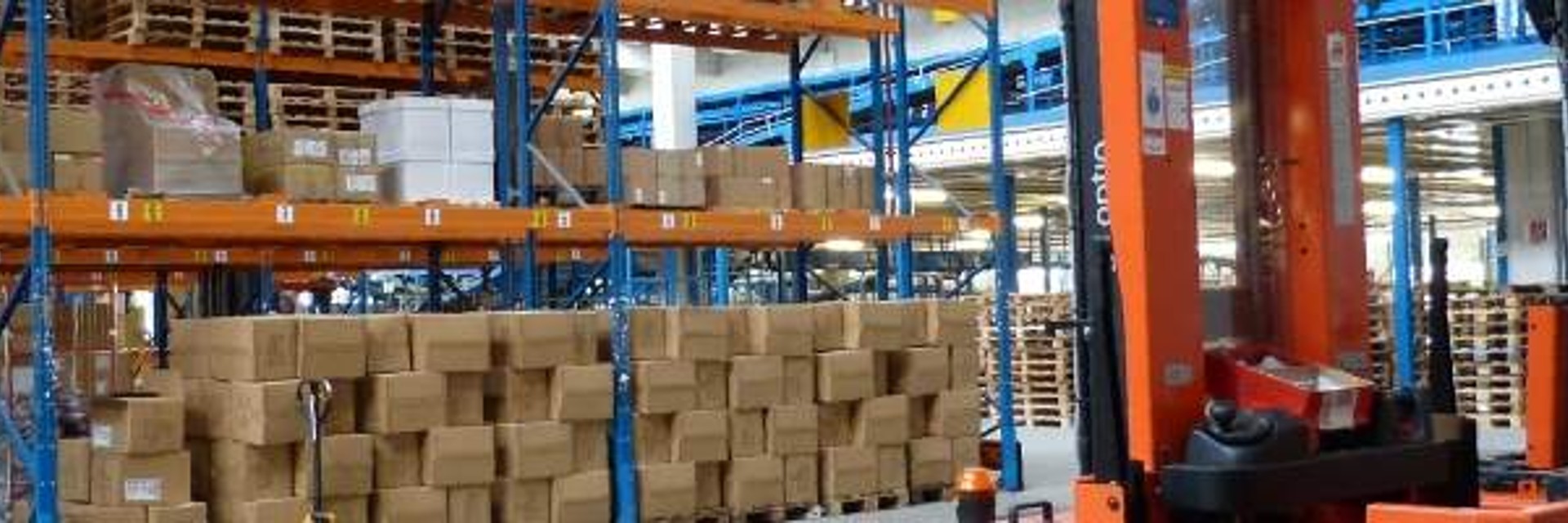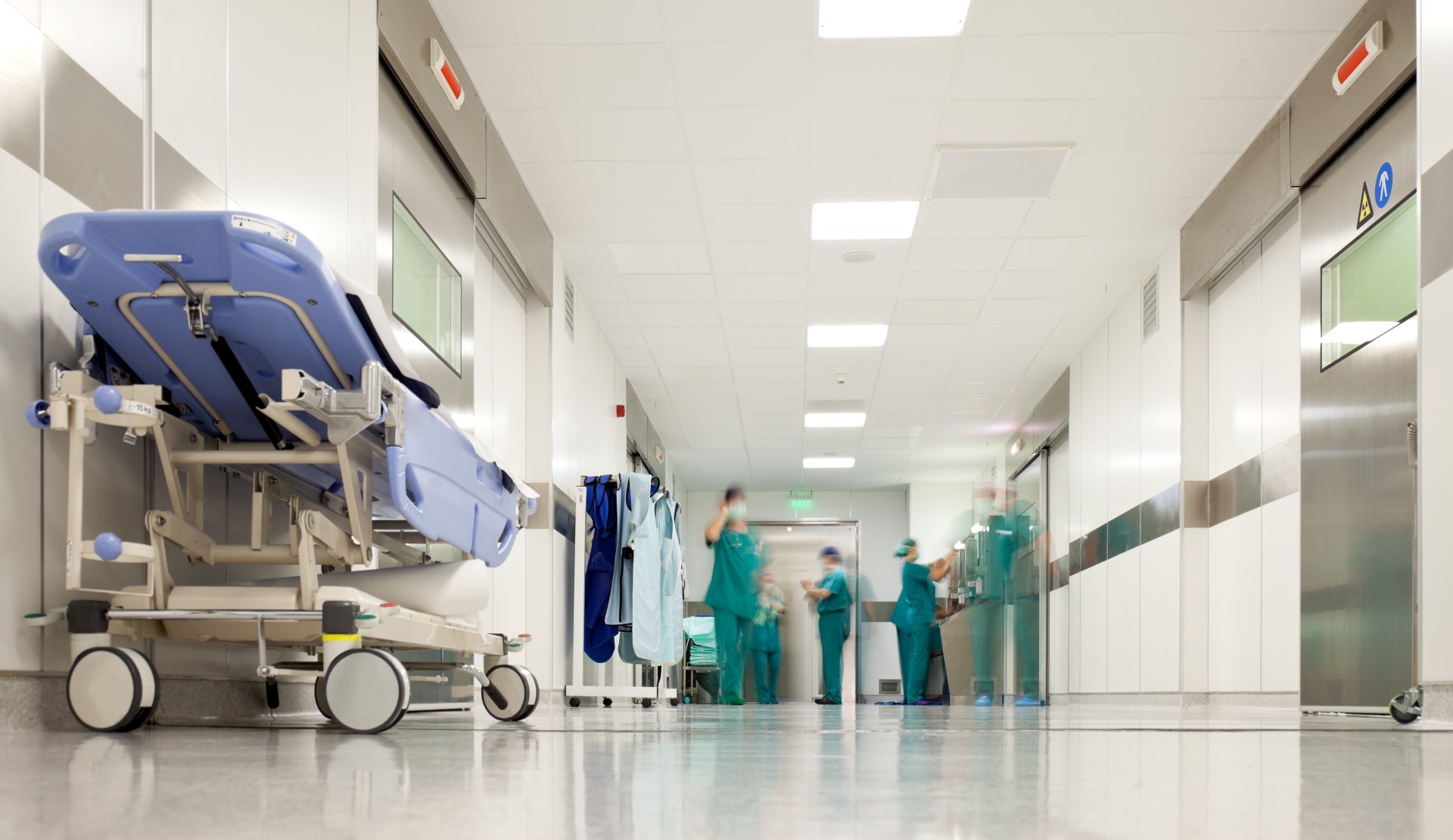Sparring about your Lean issue?
Call René
Jonny Mooi is Head of Distribution at UMCG, directs the Logistics Center Eemspoort that handles logistics for UMCG, Martini Hospital Groningen and Ommelander Hospital Groningen. Jonny has years of experience working Lean and is fully committed to making their organization better with Lean .
"Lean is not very sexy and always hard work..."
Tobe honest, I've also regularly wondered why we're doing it in the first place: what's the bottom line, is it worth it? Of course we see that our customer satisfaction goes up and business results are positive. But you only see the real value of Lean when your organization or department suddenly finds itself in dire straits.
At the time of writing we are 5/6 weeks into the corona crisis. Far too early for a final assessment but a time to take a look. Logistics is normally already a dynamic environment, now it is really tough weather and the robustness of our organization is being severely tested. How glad I am now that we have put so much energy into our Lean practices! Suddenly I see the value of all that time and effort, the training hours and also the frustration. Suddenly I see with my own eyes the evidence for some very familiar Lean statements.
I am not talking about the involvement of people. The enormous commitment and sacrifices of our colleagues in healthcare is, in my opinion, separate from any kind of operational management. Our hard work as logistics cannot even stand in the shadow of what our colleagues do at the bedside, in the ICUs, ambulances, etcetera. What they are going through and accomplishing right now is incredible.

The logistics of resources suddenly come under severe pressure. Lots of different resources are coming in, all urgent, rushed and needed immediately. Because suddenly a lot of people start getting involved in procurement, alternatives, stuff, etc. (with the best will in the world), the adage quickly becomes "WHATEVER IT TAKES: GET THE JOB DONE!" and problems now arise in our processes. Well, Lean asks "think before you act", quite tricky in the heat of the moment. But no less necessary.
This is precisely the difference between chaos and order and is of course diametrically opposed to Lean. So no wonder you hear "no Lean". But right now Lean is needed, now you don't have time to recover, now you have to do things right the first time. But it happens. Often because people don't know how things are done normally but also another proof that Lean is counterintuitive: they try to do things really well and efficiently. It takes a while for people to realize that you don't want to be a nuisance (but are at the time) but want to get it right. Getting a supply into the house is one thing, getting it processed and recorded right away prevents it from going out of sight, getting lost, not knowing where it is (i.e. panic!) and ending up in the wrong places. It also prevents a lot of repair work in the short term and even more in the longer term. Doing it right the first time does not cost extra time but does not always suit others.
"Take care of good processes and the processes will take good care of you."
Because we have spent so much time on the processes, this goes almost without a hitch. The saying "take care of good processes and the processes will take good care of you" turns out to be true. Our biggest challenge is to keep all the peculiarities in the existing processes, keep working as much as possible according to the existing practices, known to all colleagues.
Where we have invested a lot is "1:3 and 3:1". Each colleague masters 3 tasks, for each task at least 3 colleagues are trained. As a result, it was now possible to work 2 shifts, as we have a well-trained and trained group of colleagues. This allows us to more easily cope with a possible breakdown of the warehouse function due to contamination among our colleagues, thus preventing supply problems in 3 hospitals. Working safely for colleagues, being able to continue providing quality and continuity are now the main concerns. And costs? Important but not the priority right now....
On the floor: no stress, no problems, the peculiarities are well recognized and neatly put into existing channels. Because of this calmness, there is also capacity and space to think along in the problems that come up acutely.
Even though 99% of all attention is now focused on the crisis: we still have a hospital where there are also "non-corona patients. The organization just keeps running even if it is different than usual. Orders keep coming in, departments keep needing things, waste has to be removed, clean textiles have to be delivered, laundry picked up, meals delivered. That just goes on. By assigning the specifics to people we free up from the other processes, we avoid too much disruption. The rest is solved in time, human effort and good consultation.
Our inventory management is in order, but this demand and especially this stagnation in the Supply Chain, nobody foresaw. So unfortunately not as much stock of everything as we need right now but we can give instant visibility into stocks, users, suppliers and orders. And this demand shifts very quickly from protective equipment to critical resources to departmental supplies, culture materials, ventilation supplies. Sometimes several different questions a day. These are answered quickly and accurately, creating a level of calm for those asking (and concerns can be addressed).
Supplies have a very important psychological aspect: they give peace of mind when there is plenty visible or create unrest when the compartment is empty. For our medical director, one of the biggest concerns was "do we have the materials to protect our people, to allow them to work safely?" An Excel list of numbers doesn't say much. We moved these critical products from the LCE to an area in the UMCG where she could see and touch them. That gave peace of mind when there was plenty and led directly to urgency when there was little. 'Go See' proved important in that sense. Moreover, we can deliver quickly if there is a shortage somewhere, and that again gives certainty (and prevents local hoarding). That's what the customer needs now: no worries for a while.
We have had a good relationship with our carriers for a long time. DHL has been providing regular transportation to and from the hospitals since LCE opened. CE couriers have been providing emergency transportation for us for years. Now, with the logistics challenges, even before we have asked a question they offer all the help: how can we help you, what do you need, let us know. And not only these carriers but also, for example, from the Lean Management Institute the same offer. Our laundry partner also has to pull out all the stops, our colleagues in waste disposal, numerous suppliers. Good partners are crucial and it shows. Different days have to be driven, we organize a lot of transports through the provinces for deliveries. Night transports to Nijmegen, Amsterdam, Maastricht and Vianen with disinfection materials. No problem, just let us know, we arrange it for you.
The above is not just an observation of myself. One of the procurement colleagues is busy organizing for national procurement. He sees what is happening around the country and confirms my view: Jonny, the logistics here are thick and fast!
Thanks, I now know that our investments have been worthwhile.


Sign up for our newsletter